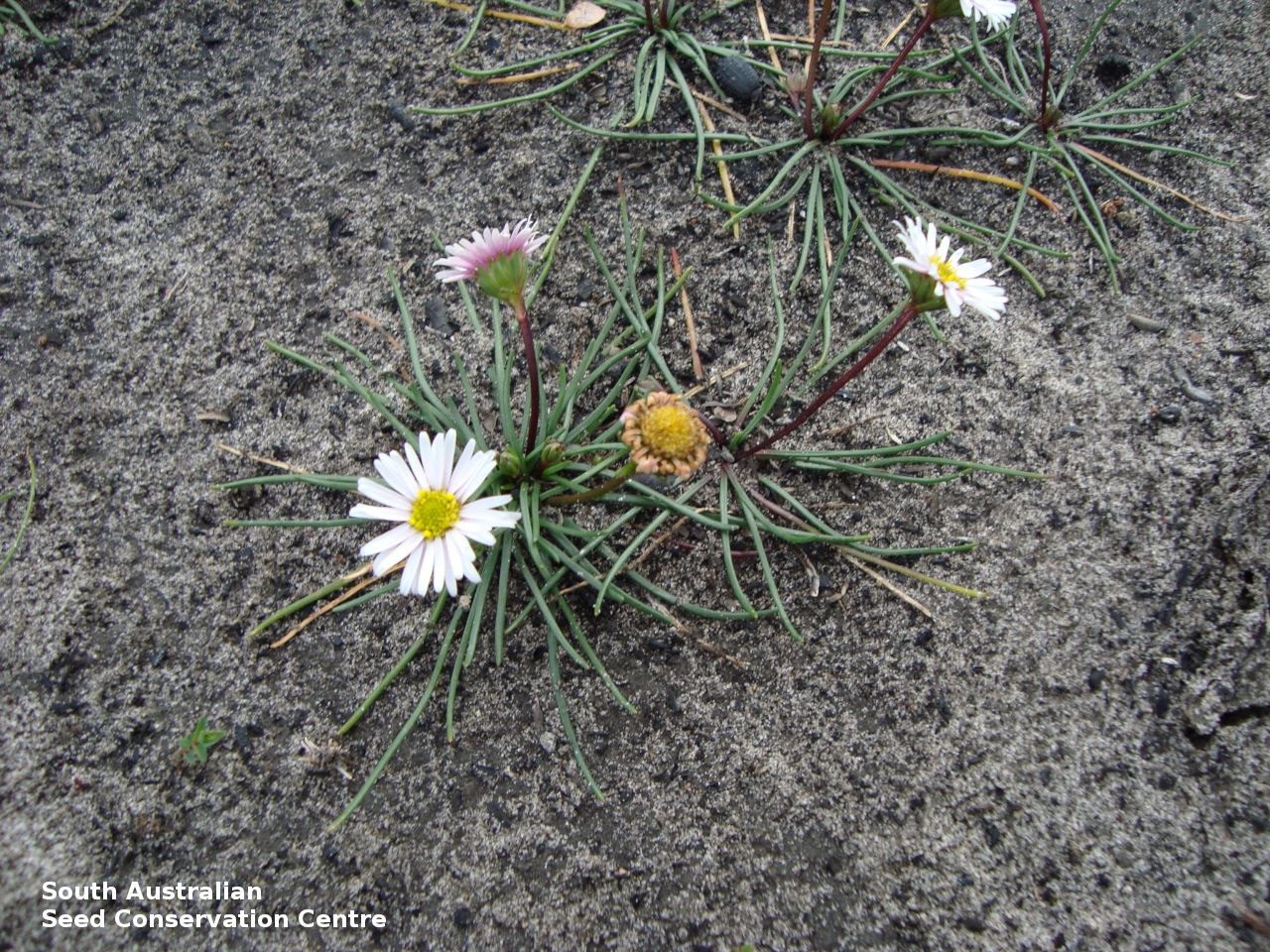
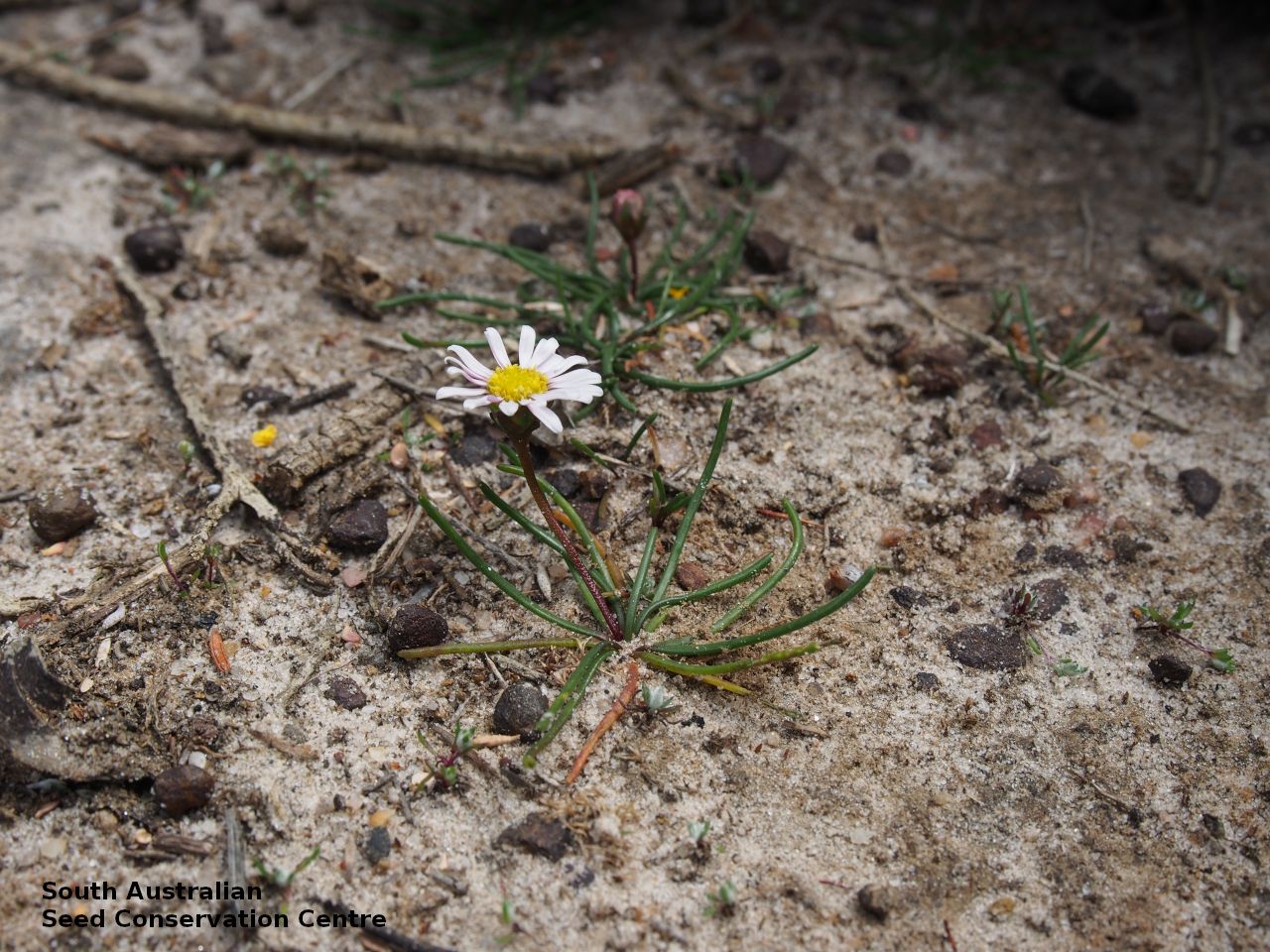
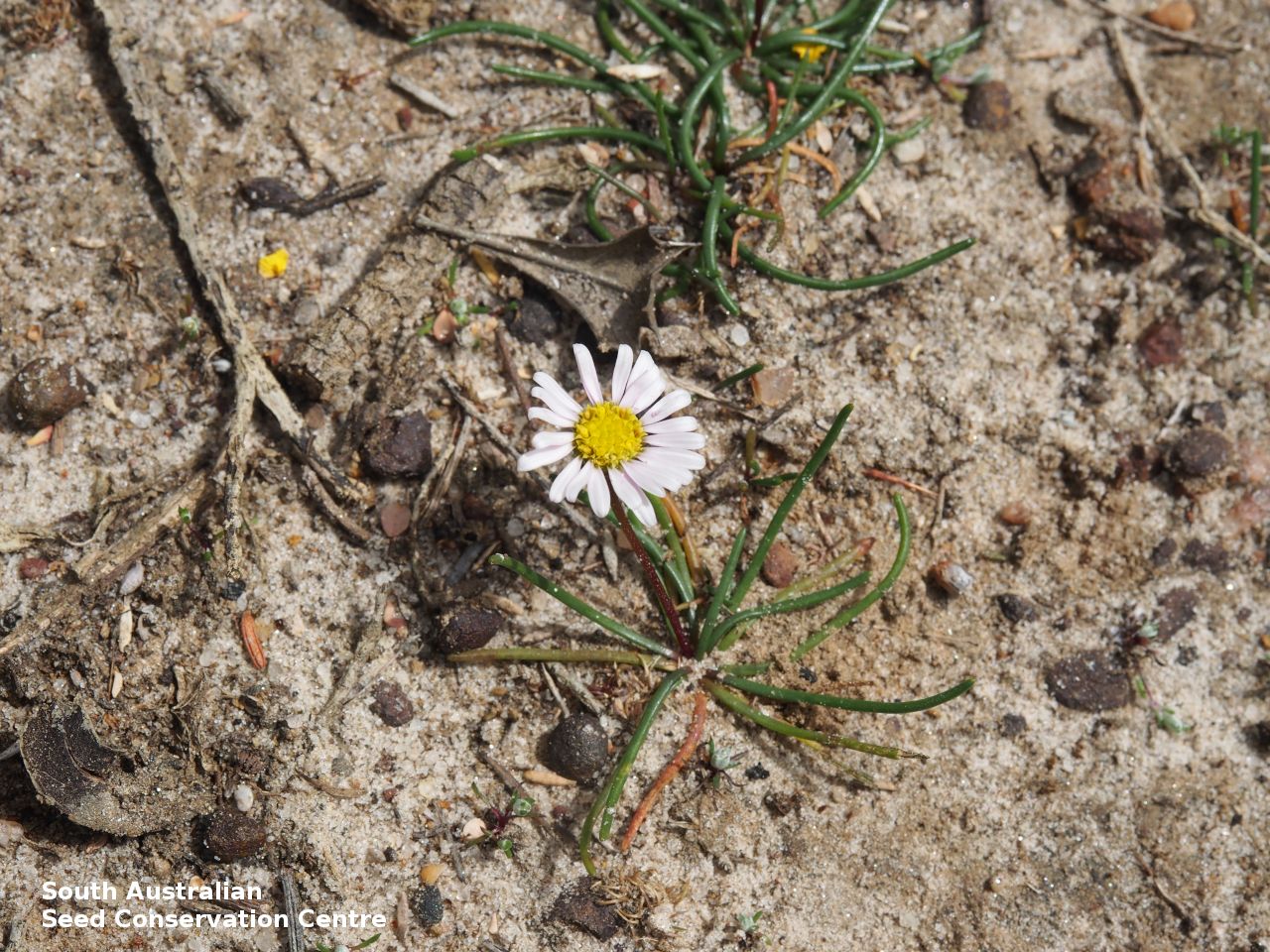
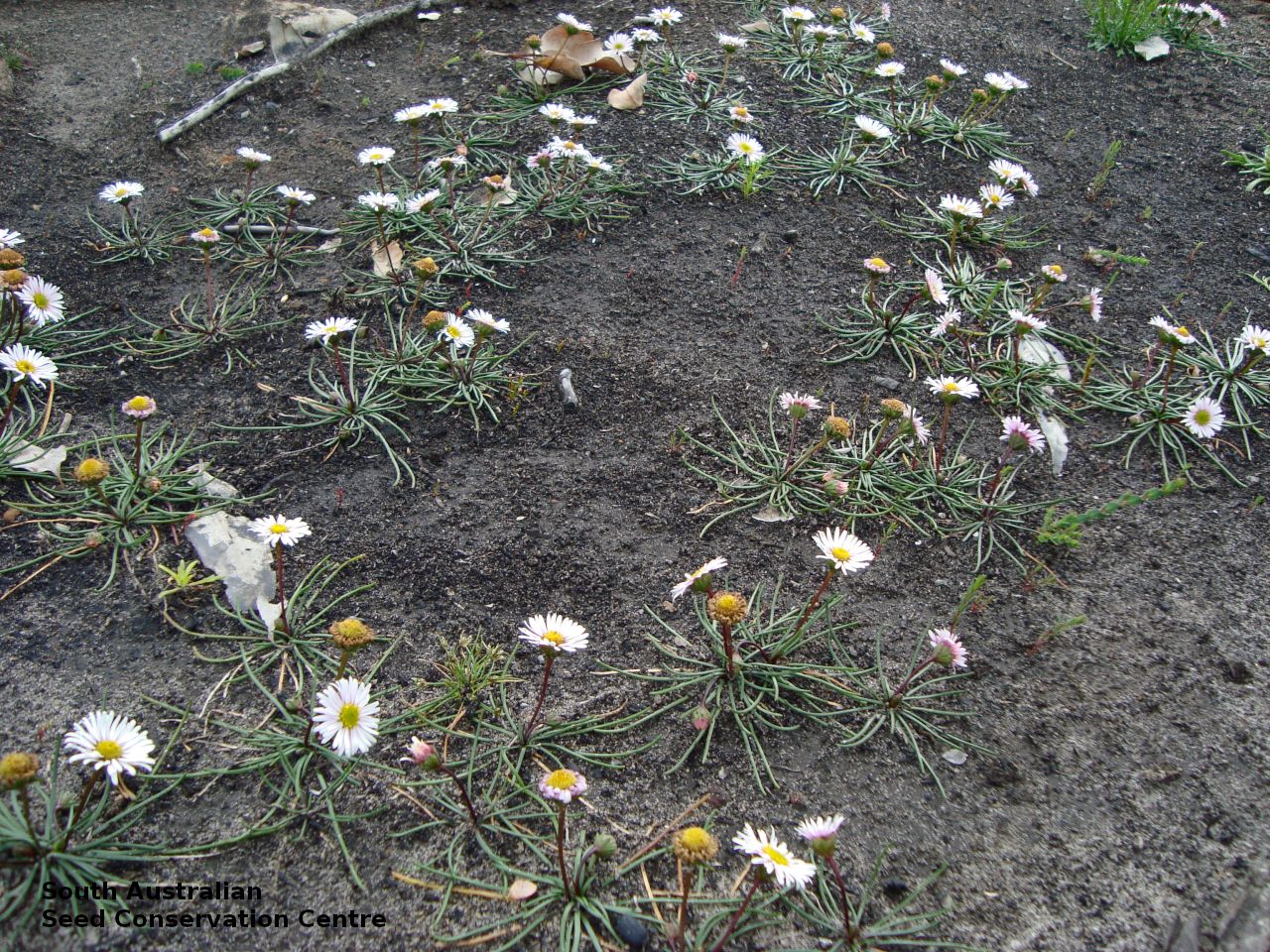
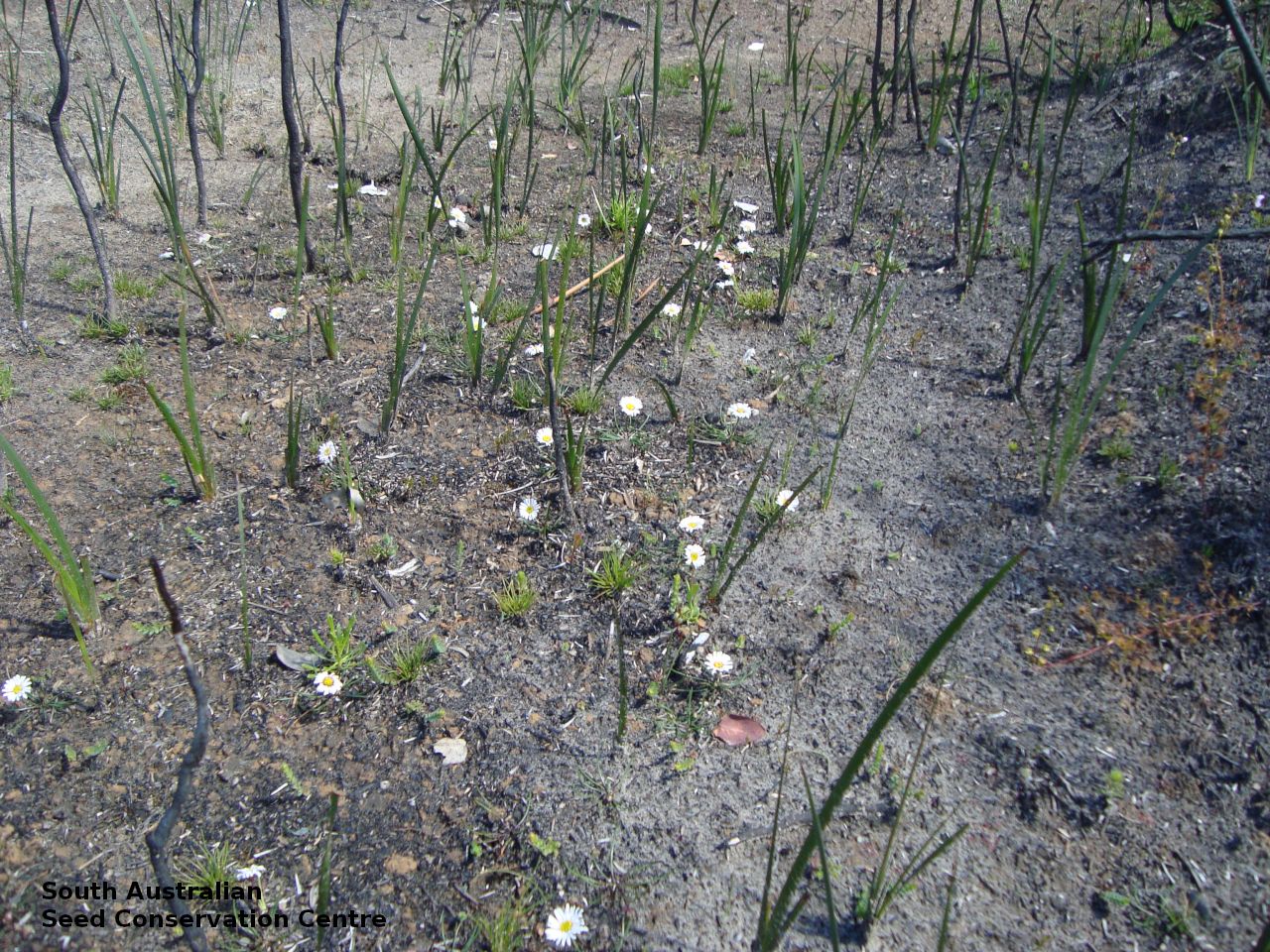
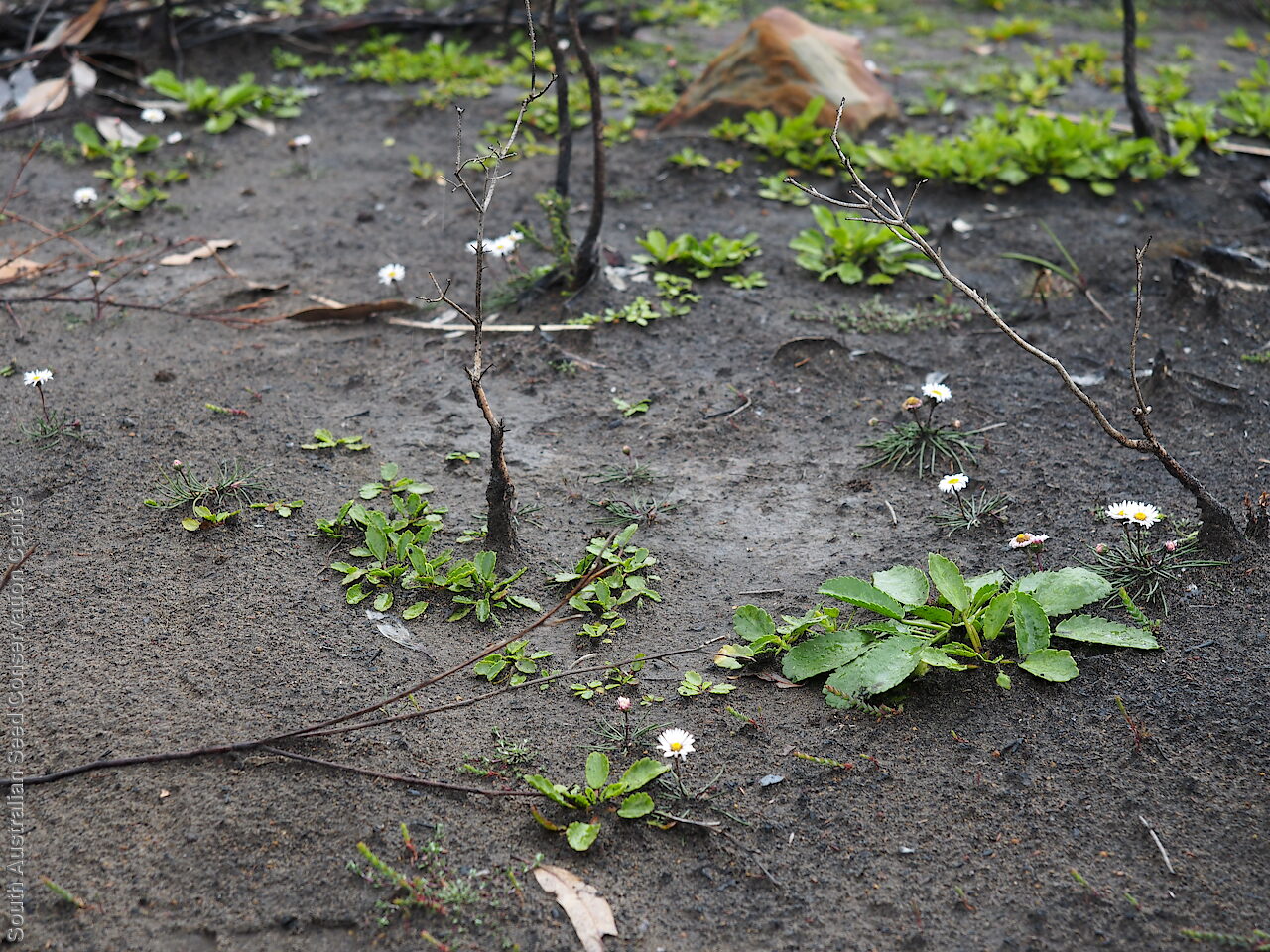
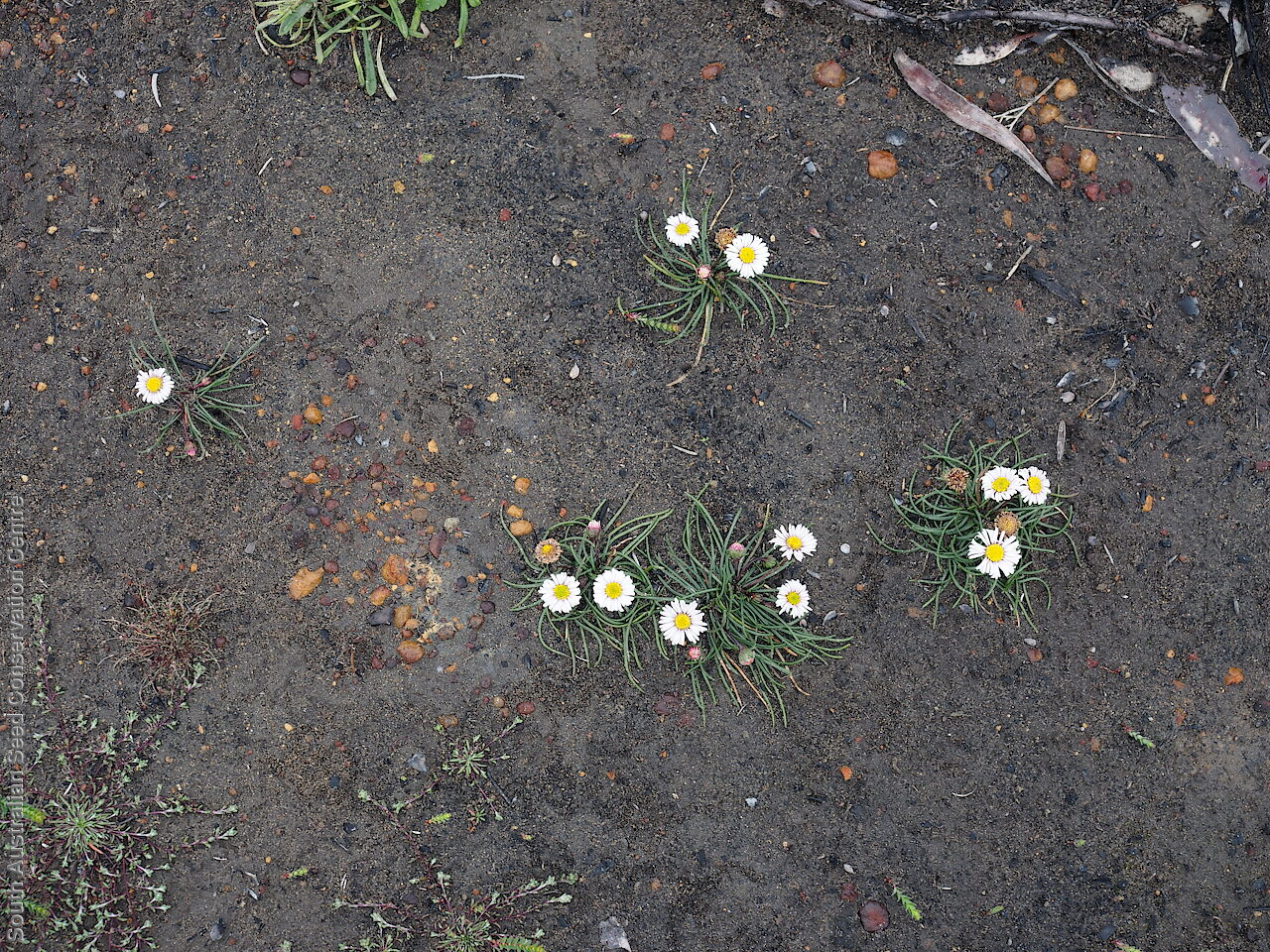
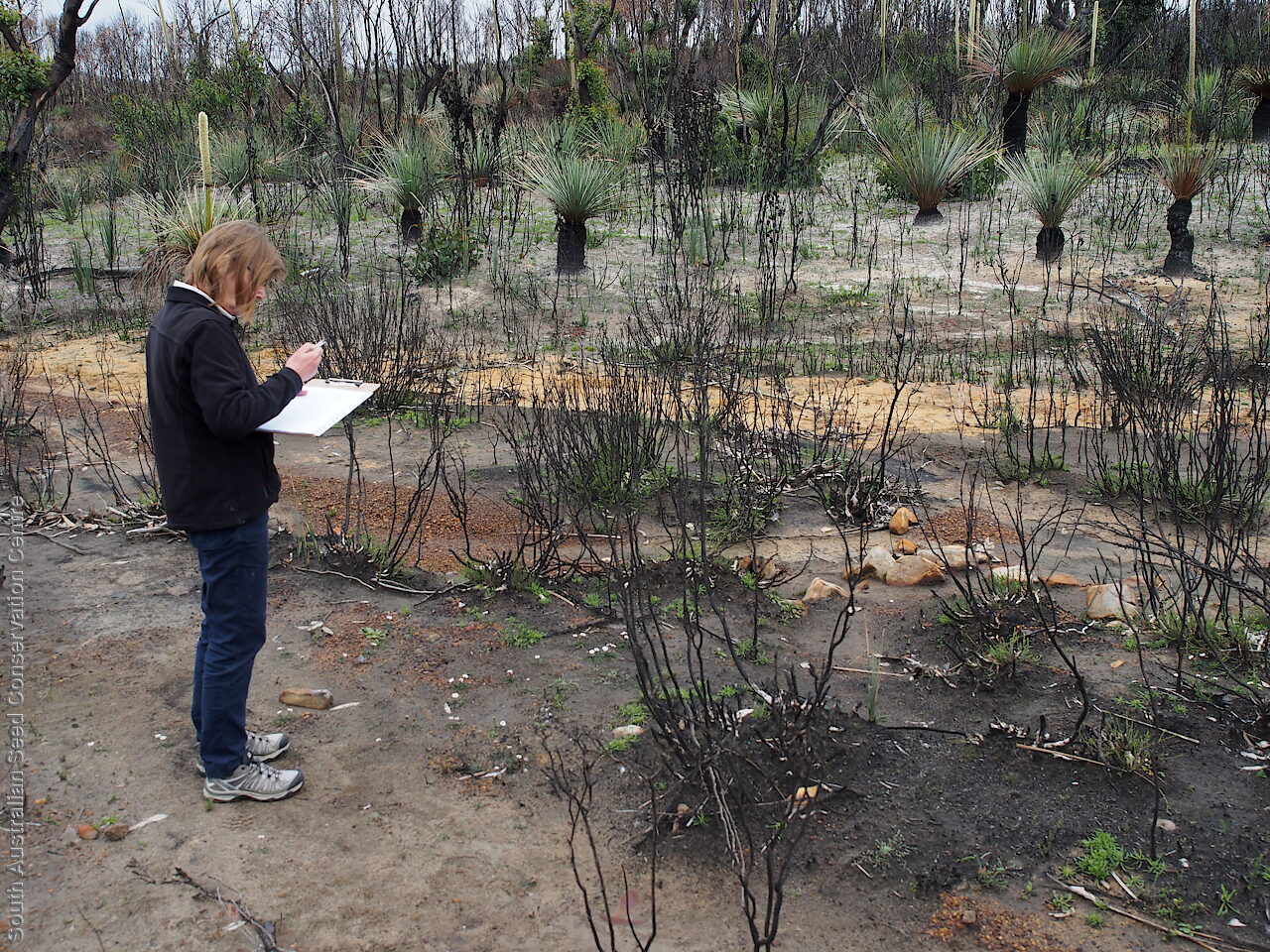
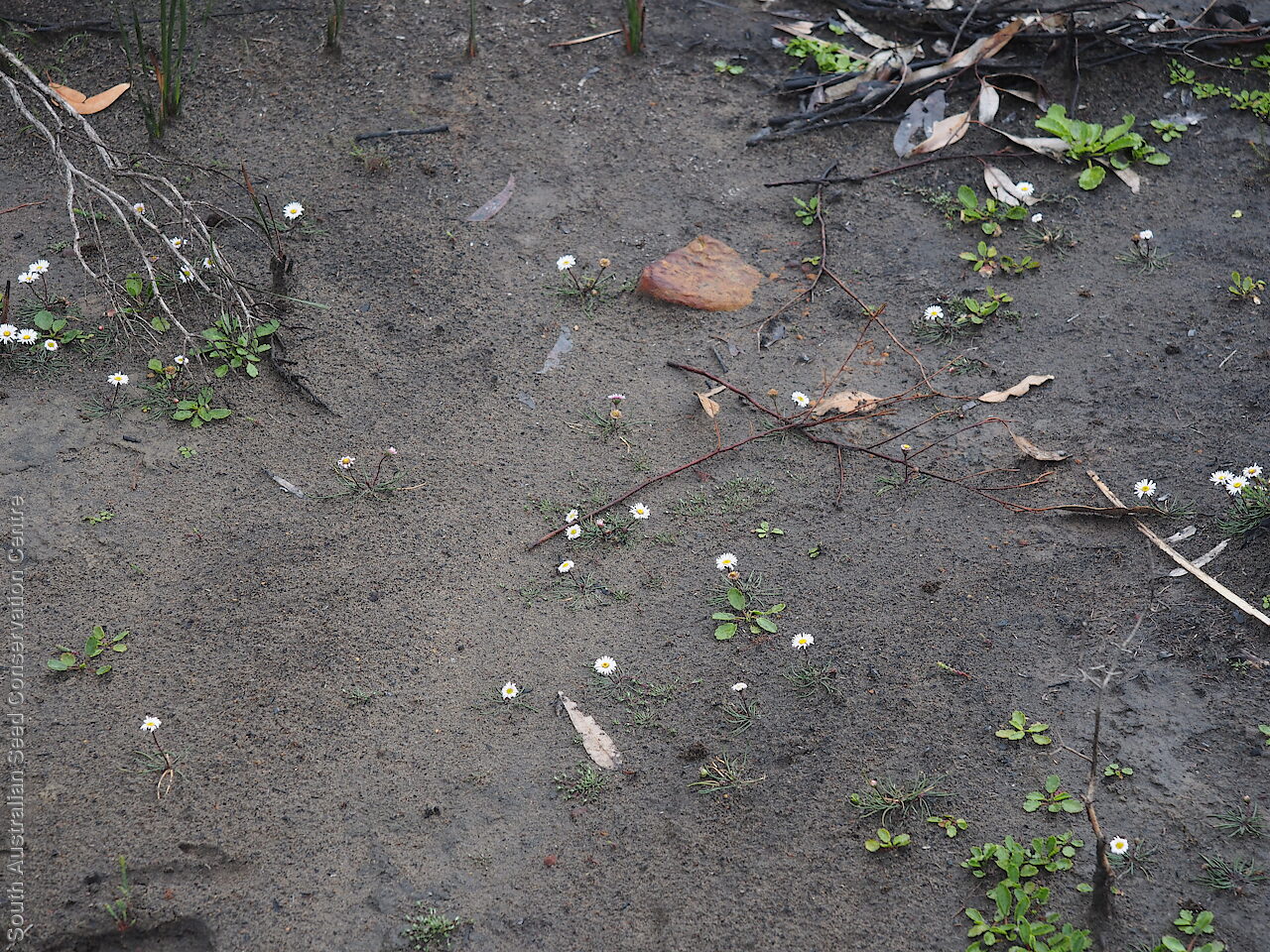
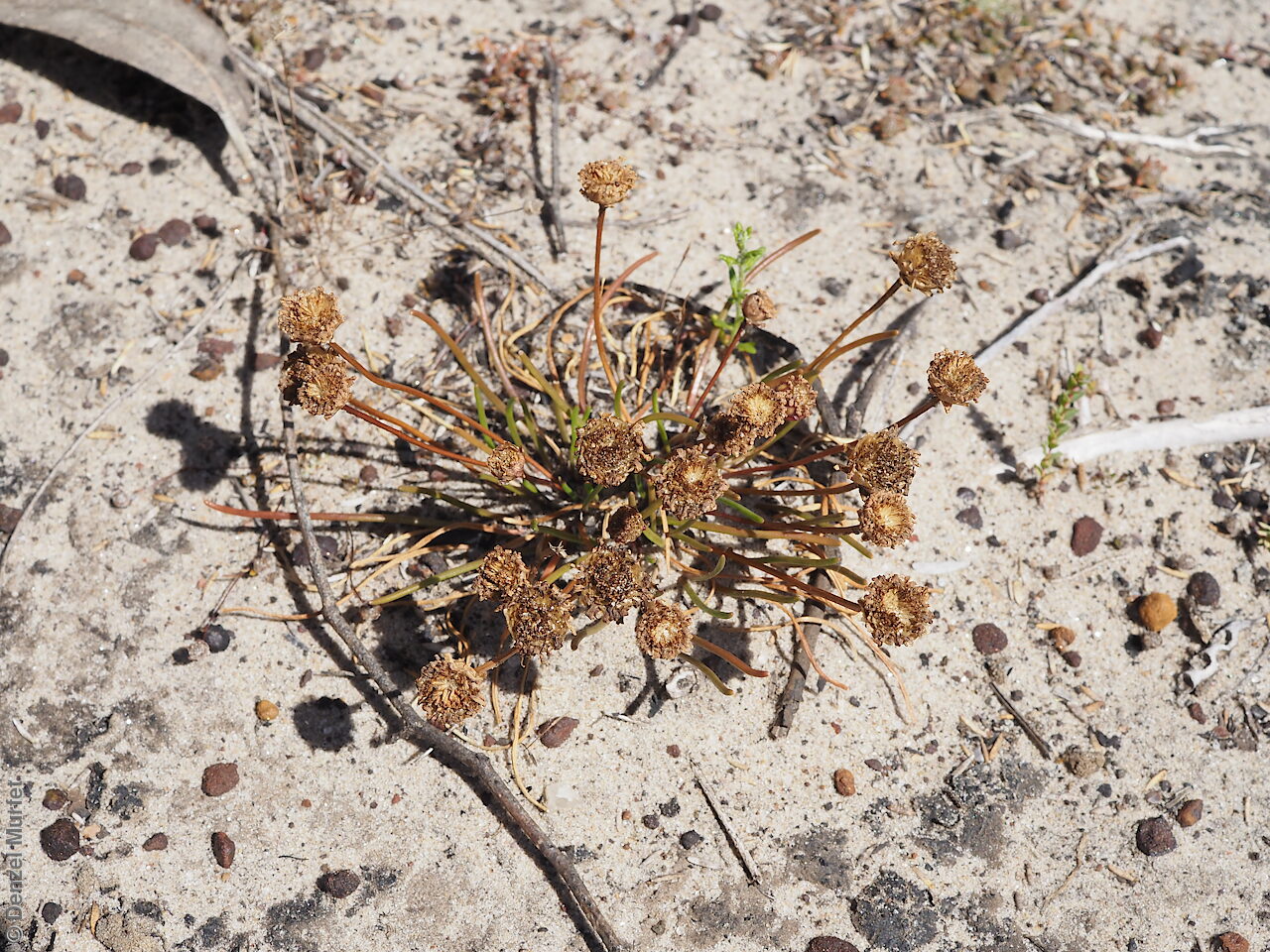
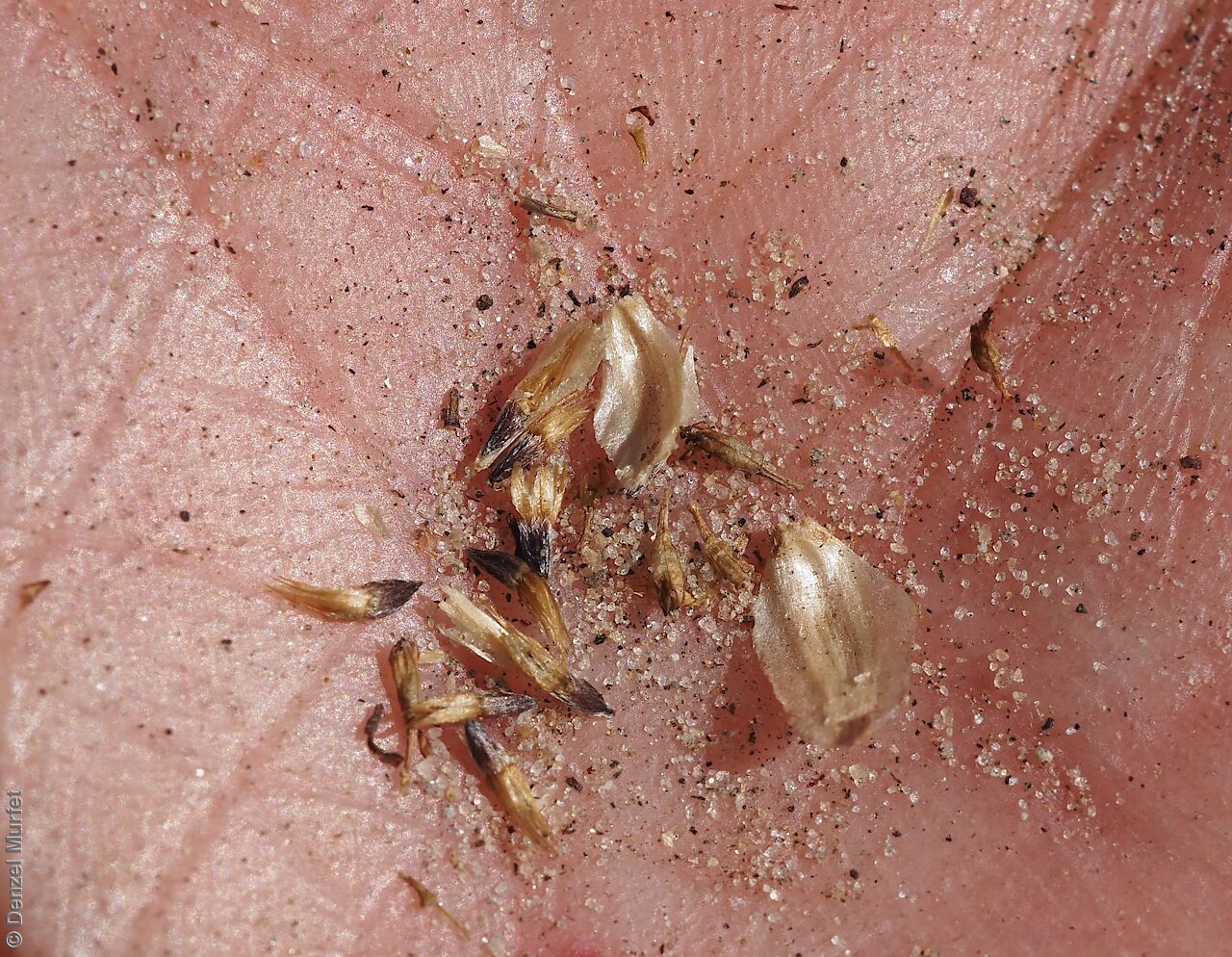
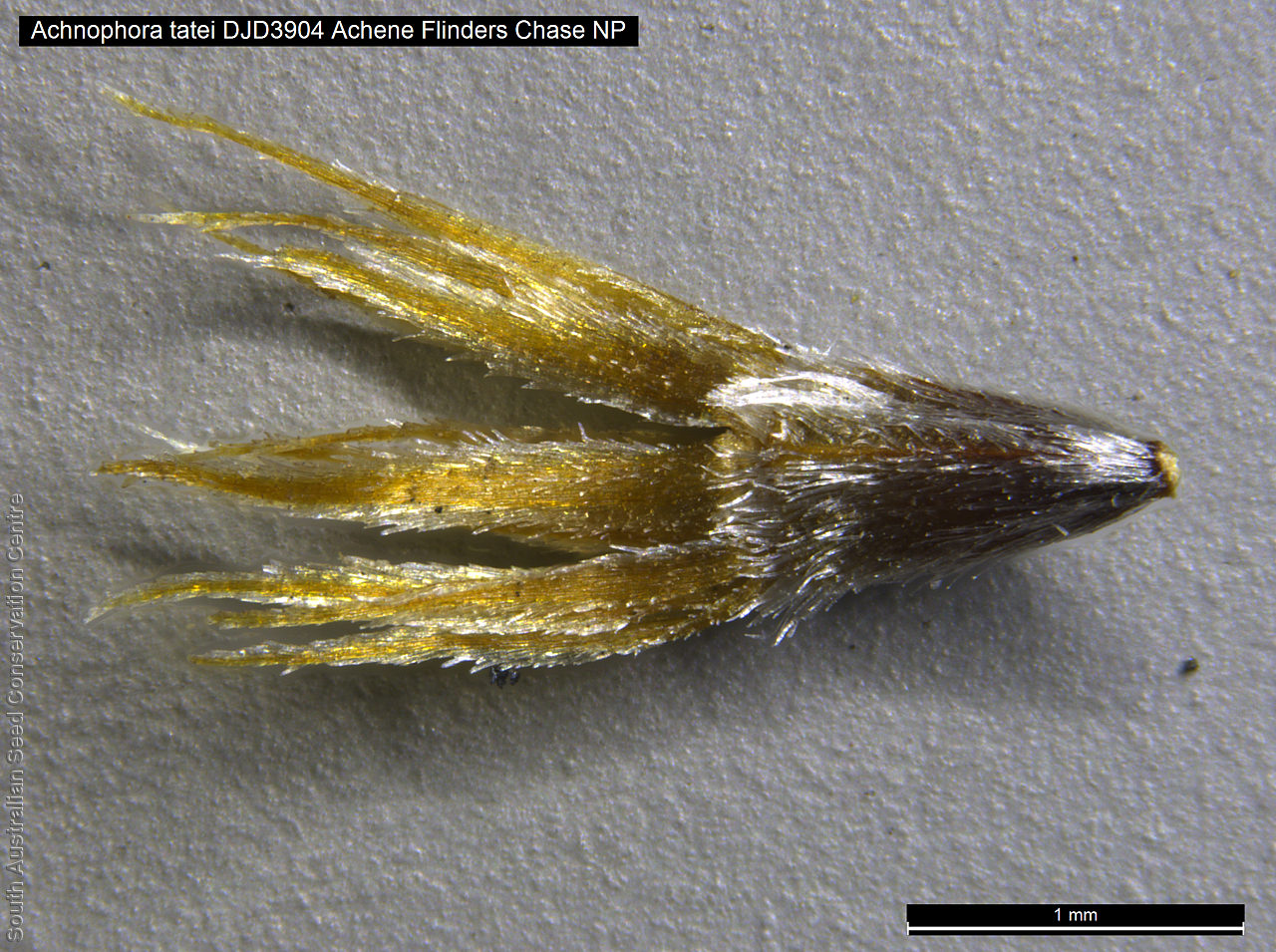

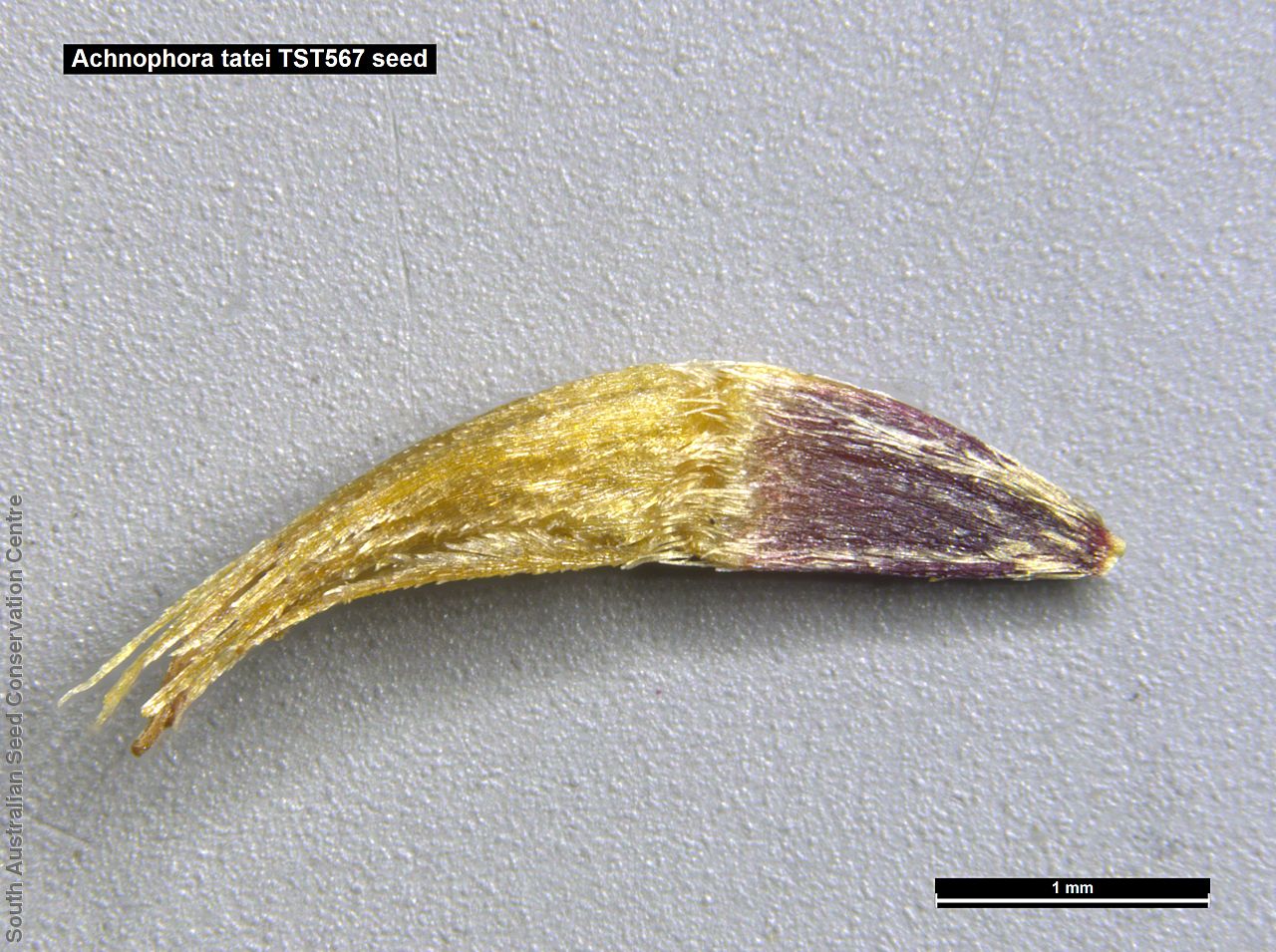
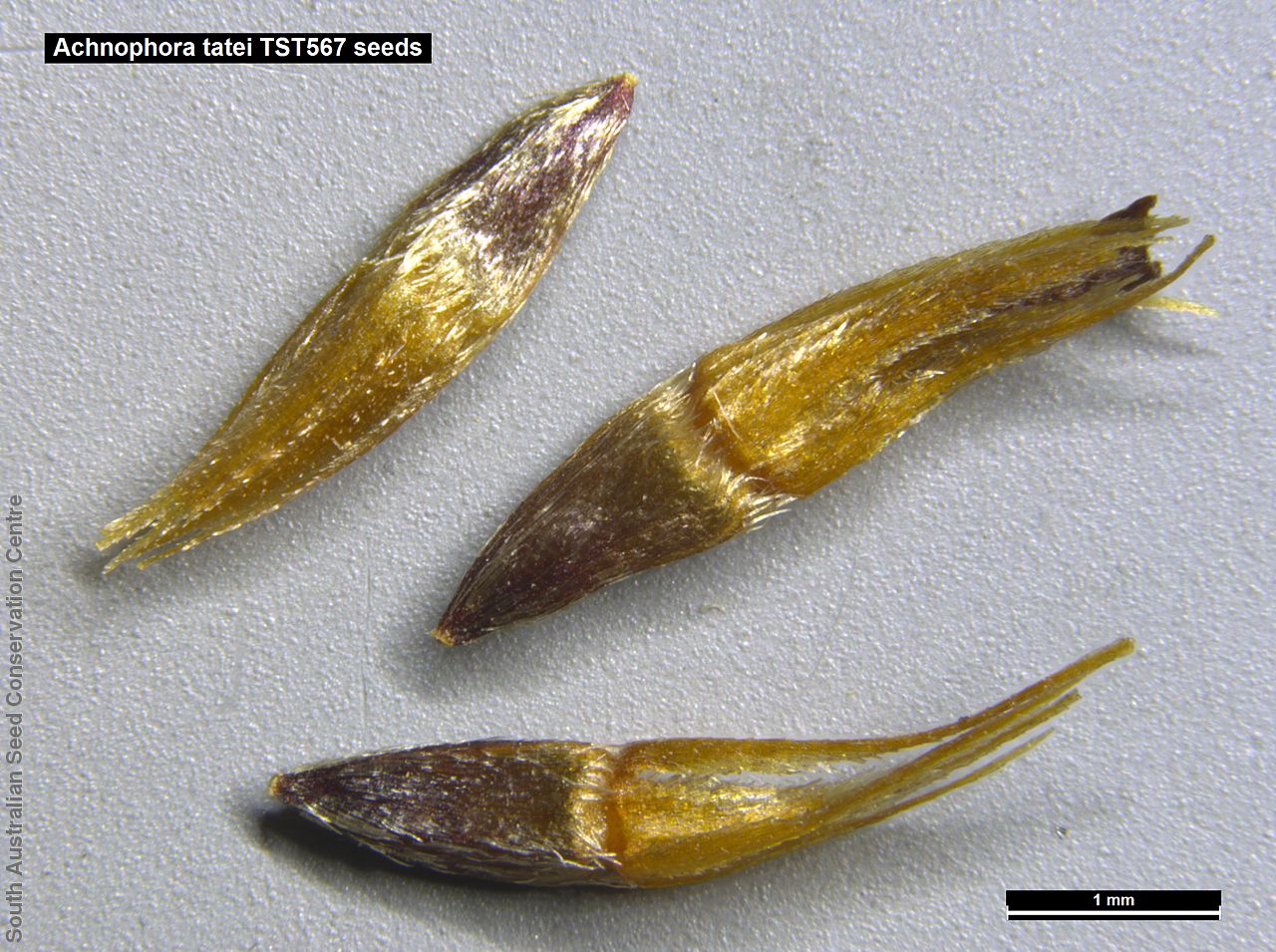
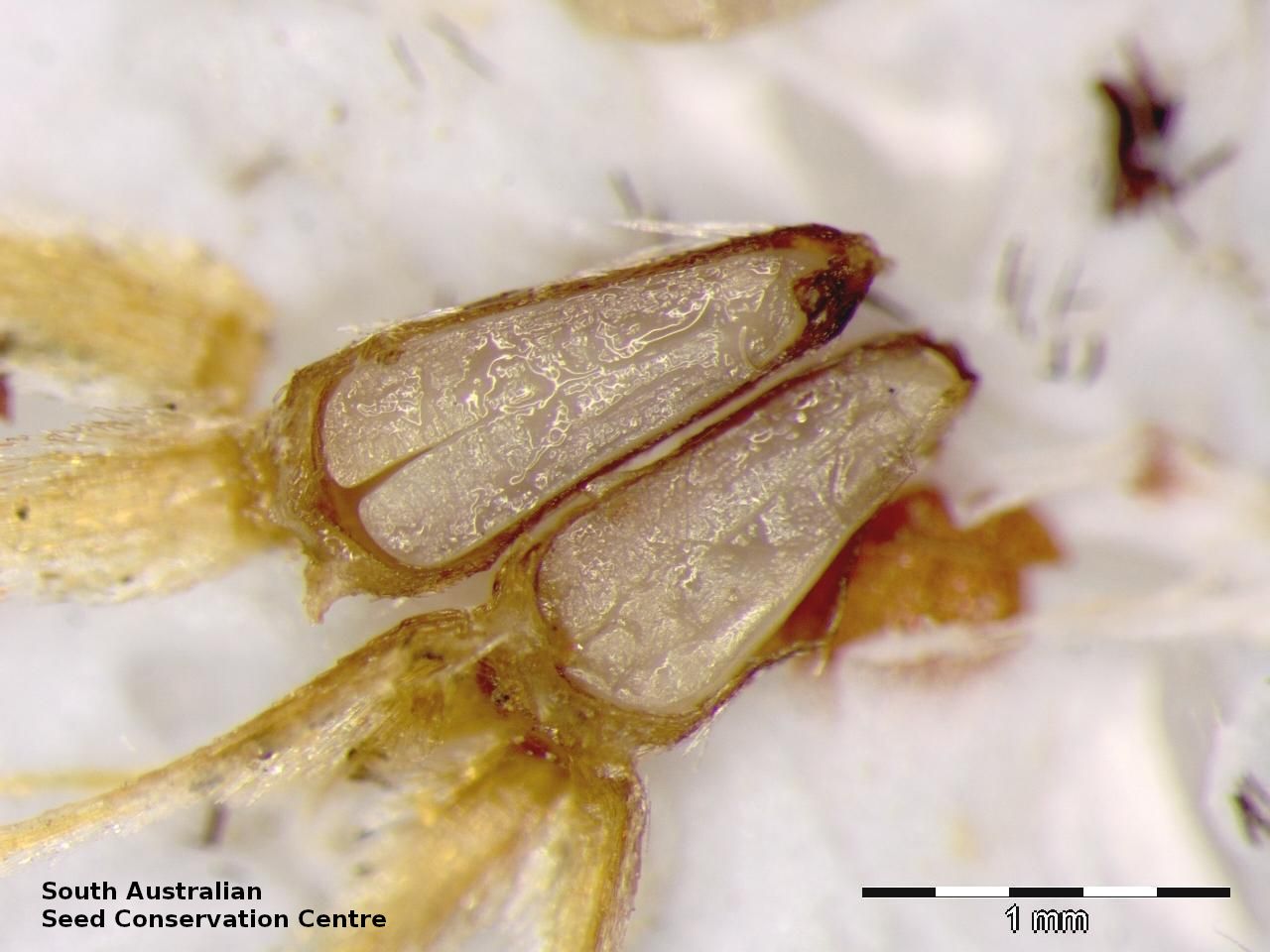
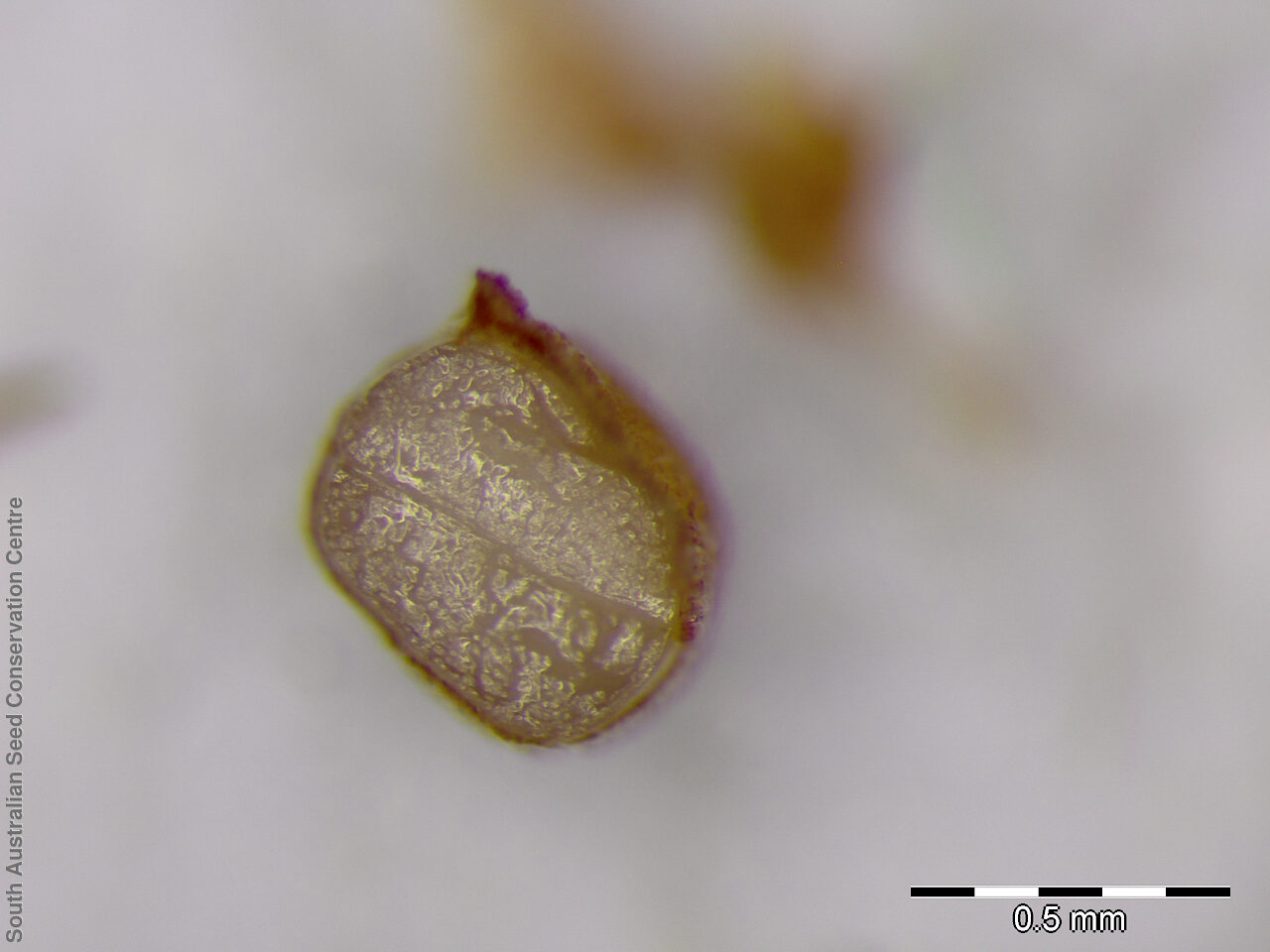
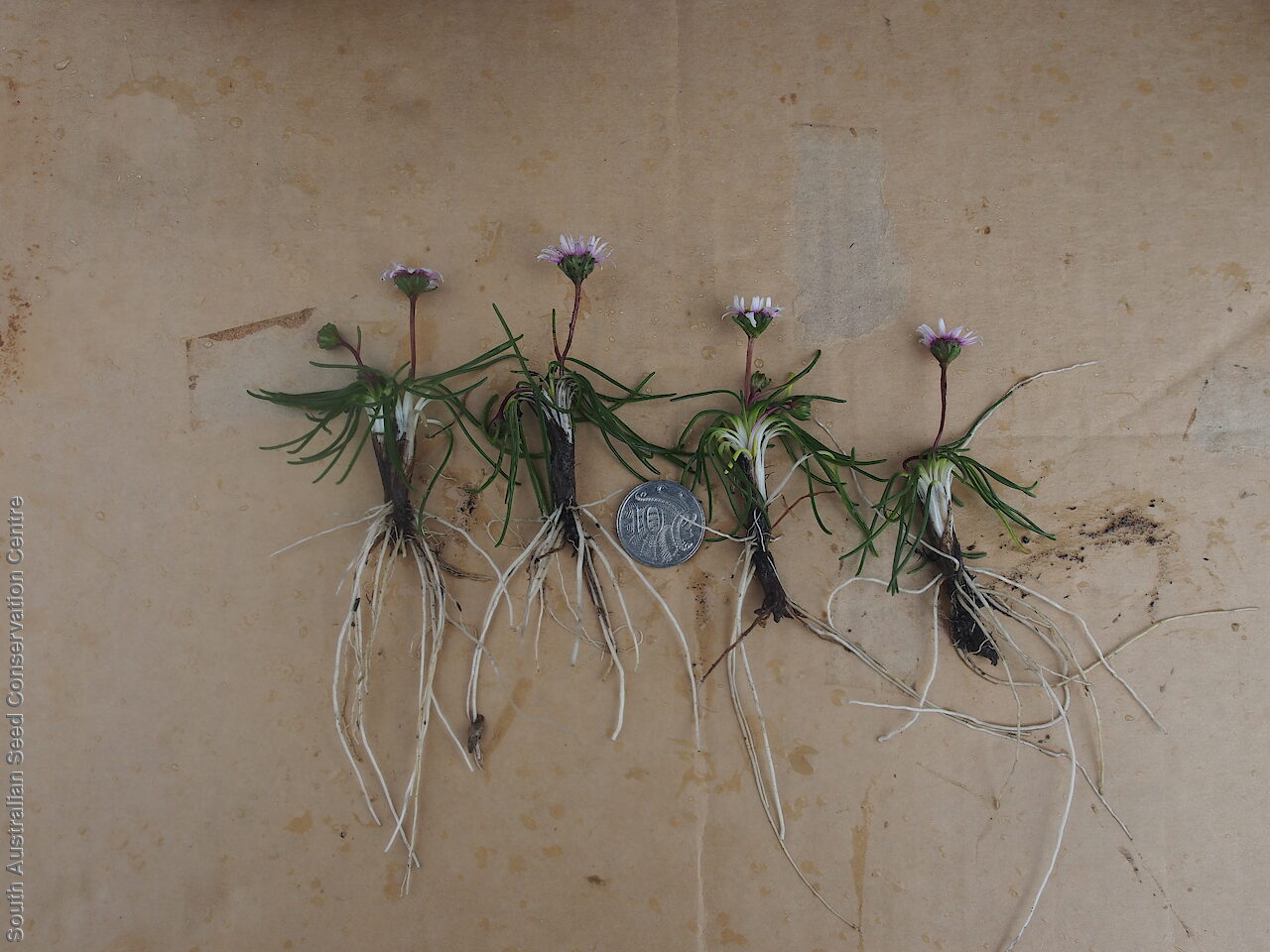

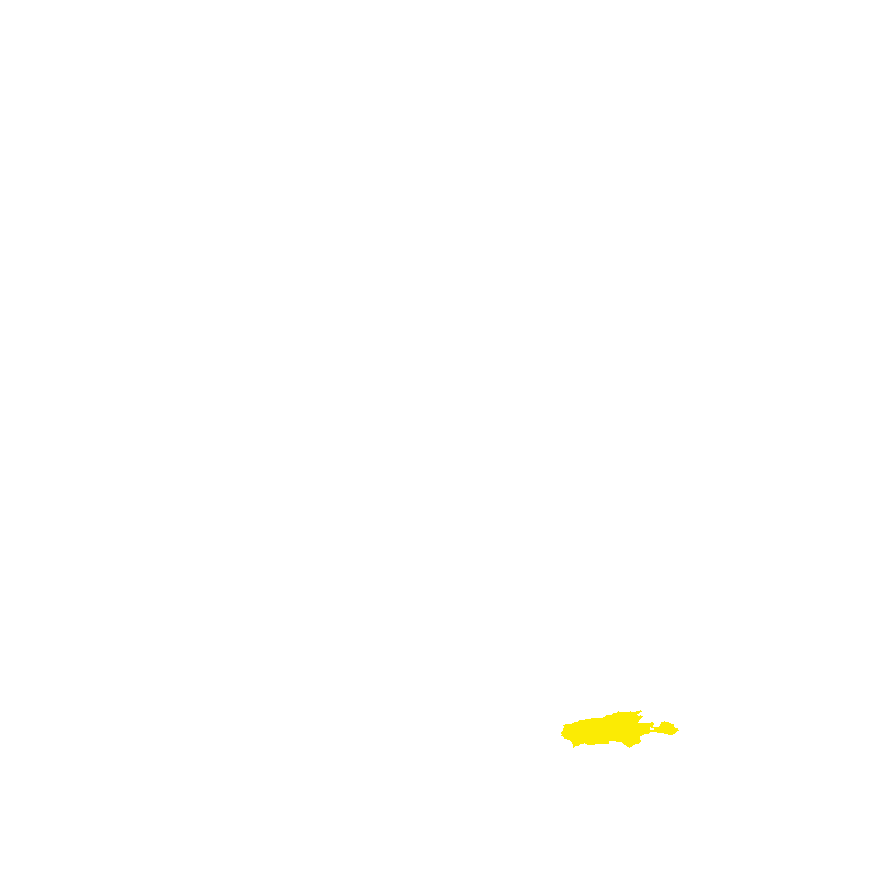
Common names
Kangaroo Island Daisy
Kangaroo Island River Daisy
Etymology
Achnophora from the Greek 'achne' meaning chaff and 'phoros' meaning bearing, referring to the conspicuous scales of the receptacle and of the pappus. Tatei named in honour of Ralph Tate (1840-1901), Professor of Natural Science, Adelaide and collector of the type specimen.
Distribution and status
Endemic to South Australia and found only on Kangaroo Island, growing on edges of streams and seasonally marshy ground on silty sand with ironstone. Native. Rare in South Australia.
Herbarium region: Kangaroo Island
NRM region: Kangaroo Island
AVH map: SA distribution map (external link)
Plant description
Small perennial daisy with long, narrow, rounded basal leaves. Flowers are white to light pink daisies, one on each stalk. Flowering between September and November. Fruits are dried daisy-head. Seeds are brown to reddish-brown, cone-shaped achenes to 1.5 mm long and 1 mm wide, covered in short hairs with golden pappus bristles at one end. Seed embryo type is spatulate.
Seed collection and propagation
Collect seeds between November and January. Pick maturing daisy-heads by hand, when dried off and turning brown with red-brown seeds inside. Place the heads in a tray and leave to dry for 1-2 weeks. Then rub the heads gently with your hands to dislodge the seeds. Use a sieve to remove the unwanted material. Store the seeds with a desiccant such as dried silica beads or dry rice, in an air tight container in a cool and dry place. Seed viability is very high for this species. Seeds are non-dormant, viable seed should germinate readily.
Fire Response
Only re-sprouting plants observed at 6 survey sites. No seedlings observed but seedlings may be detectable in second year post-fire.
Longevity: >10 years
Time to flowering: 1 year from re-sprouting plants
Recovery Work
In 2020-2021 this species was assessed post-fire in 1st year after major Jan 2020 fire. A total of 59,200 seeds have been collected & banked for three population in the 2020 fire scar. Germination screening testing the response to fire cues will be undertaken in 2021.This project work was undertaken with funding awarded under Greening Australia's Project Phoenix.
| Location | No. of seeds (weight grams) | Number of plants | Date collected | Collection number Collection location | Date stored | % Viability | Storage temperature |
|---|---|---|---|---|---|---|---|
| MSB | 1,200 (0.24 g) | 30+ | 13-Nov-2006 | DJD655 Kangaroo Island | |||
| BGA MSB | 4,200 (2.18 g) 4,200 (2.18 g) | 100+ | 11-Nov-2008 | DJD1250 Kangaroo Island | 20-Jul-2009 | 95% | -18°C |
| BGA | 5,000 (2.13 g) | 100+ | 11-Aug-2008 | TST567 Kangaroo Island | 20-Jul-2009 | 100% | +5°C, -18°C |
| BGA | 24,900 (7.920 g) | 100+ | 13-Jan-2021 | DJD3986 Kangaroo Island | 28-Jun-2021 | 100% | -18°C, -80°C |
| BGA | 7,100 (2.340 g) | 50+ | 10-Dec-2020 | DJD3904 Kangaroo Island | 28-Jun-2021 | 95% | -18°C, -80°C |
| BGA | 27,200 (10.420 g) | 100+ | 10-Dec-2020 | JRG769 Kangaroo Island | 28-Jun-2021 | 100% | -18°C, -80°C |
| BGA | 7,700 (2.413 g) | 100+ | 2-Dec-2021 | DJD4085 Kangaroo Island | 7-Jul-2022 | 100% | -18°C, -80°C |
| BGA | 4,300 (1.540 g) | 100+ | 2-Dec-2021 | DJD4084 Kangaroo Island | 7-Jul-2022 | 95% | -18°C |
| BGA | 2,000 (0.744 g) | 100 | 1-Dec-2021 | JRG769 Kangaroo Island | 7-Jul-2022 | 100% | -18°C |
Number of plants: This is the number of plants from which the seeds were collected.
Collection location: The Herbarium of South Australia's region name.
% Viability: Percentage of filled healthy seeds determined by a cut test or x-ray.